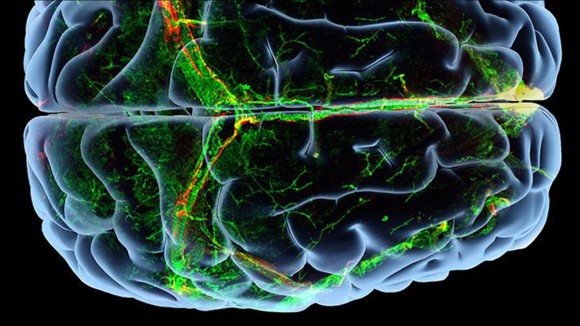Tune in here for the below episodes: iTunes, Google Podcasts, RSS Feed, SoundCloud.
November 10: Opioid Release after High-Intensity Interval Training in Healthy Human Subjects.
Many people who exercise regularly have experienced a so-called "runner's high," either a feeling of euphoria after exercise, or a feeling of happiness and well-being. Scientists have studied this and found that exercise does indeed improve mood and combat stress, for instance, but researchers at Finland's University of Turku wanted to know: Are endorphins being produced in and thus affecting the brain? To try to answer this question, the team labeled a drug that can bind to endorphin receptors in the brain and compete with endogenous endorphins. So if the study subjects were producing endorphins in the brain, the drug binding should be reduced. Listen to Neuropsychopharmacology's latest podcast to learn more! Related Articles.
September 13: Opioid Self-Administration is Attenuated by Early-life Experience and Gene Therapy for Anti-Inflammatory IL-10 in the Nucleus Accumbens of Male Rats.
Studies have shown that stress and trauma early in life can lead to an increased risk for drug addiction later in life. In rat models developed to mimic and study this effect, some rats received normal maternal care, while others received enriched maternal care - extra grooming and attention from their mothers. Those with enriched maternal care have been shown to be less likely to return to a room in which the rats received a dose of morphine. But does that accurately represent drug use? They've also been shown to have neurological changes in the brain - but these changes have been correlational. A new study published in the journal Neuropsychopharmacology was set up to tease out a number of aspects of this research. Related Article.
July 13: Beta-Adrenoceptor Blockade in the Basolateral Amygdala, But Not the Medial Prefrontal Cortex, Rescues the Immediate Extinction Deficit. Related Article.
One method of treating Post-traumatic stress disorder (PTSD) involves extinction therapy, but researchers have found that the timing of such therapy is extremely important, and that it often doesn't work if the therapy is conducted too soon after the initial trauma. Stress itself may be harming the efficacy of the treatment. A team of researchers at Texas A&M University conducted research to determine whether there was a way to dampen stress and make extinction therapy more effective by using pharmaceuticals. The results were published in a recent issue of the journal Neuropsychopharmacology. Listen to the latest podcast to hear about this study from researchers Stephen Maren and Tom Giustino! Related Article.
May 12: Arbaclofen in Children and Adolescents with Autism Spectrum Disorder.
Autism Spectrum Disorder is a disorder that has been defined by the medical community, but so far, none of the medications available for ASD treat the core symptoms of the disease, but rather secondary symptoms such as agitation or hyperactivity. Because ASD is genetically linked to Fragile X syndrome, researchers noticed that in a mouse model, the drug arbaclofen reduced what would be core symptoms of autism, such as combatting social avoidance and improving social function. A randomized placebo-controlled trial was conducted to test this idea and the results were recently published in Neuropsychopharmacology. Listen to the latest BrainPod to hear Dr. Jeremy Veenstra-VanderWeele discuss these results! Related Article.
March 15: The Gateway Hypothesis of Addiction.
The gateway hypothesis, that early use of drugs such as tobacco, alcohol, or marijuana during adolescence progresses to harder drugs such as cocaine and heroin, was first proposed in the 1970s. In a recent publication of the journal Neuropsychopharmacology, Yasmin Hurd, Professor of Neuroscience at Mount Sinai, co-authored a commentary evaluating the research to date that either supports or challenges the gateway hypothesis. Listen to the latest BrainPod, Neuropsychopharmacology's official podcast, to hear more from Dr. Hurd! Related Article.
January 12: Sex as a Biological Variable: Who, What, When, Why, and How.
The National Institutes of Health recently published a statement requiring sex as a biological variable in studies. This is in part simply because it's good science, and in part to correct for decades in which both animal and human studies were largely conducted with male subjects. In their review paper responding to this statement, Dr. Tracy Bale and Dr. Neill Epperson discuss how sex has a direct impact on brain development, and how it results in a sexually dimorphic brain: meaning there are physical differences between males and females. Listen to the latest BrainPod, Neuropsychopharmacology's official podcast, to hear Dr. Bale and Dr. Epperson discuss this topic! Related Article.
